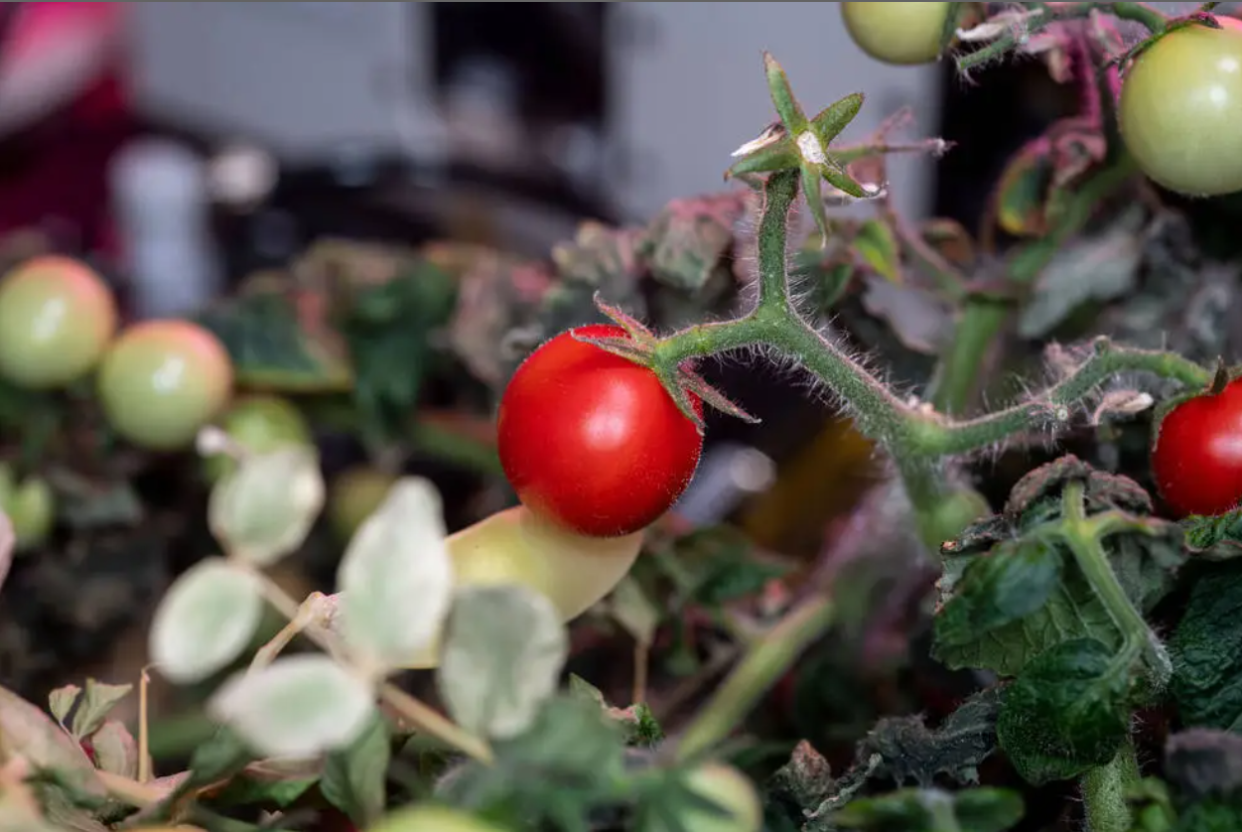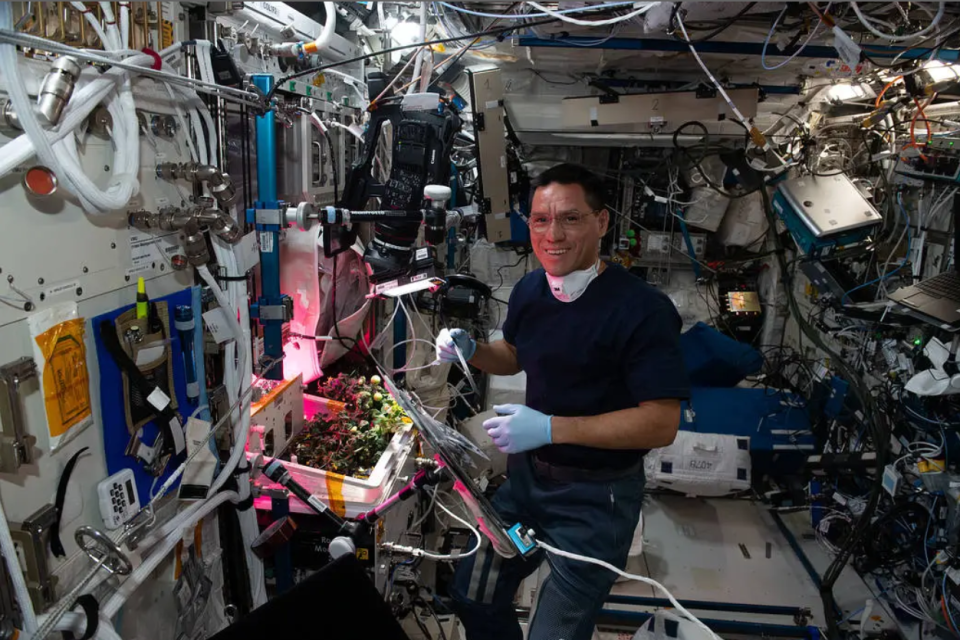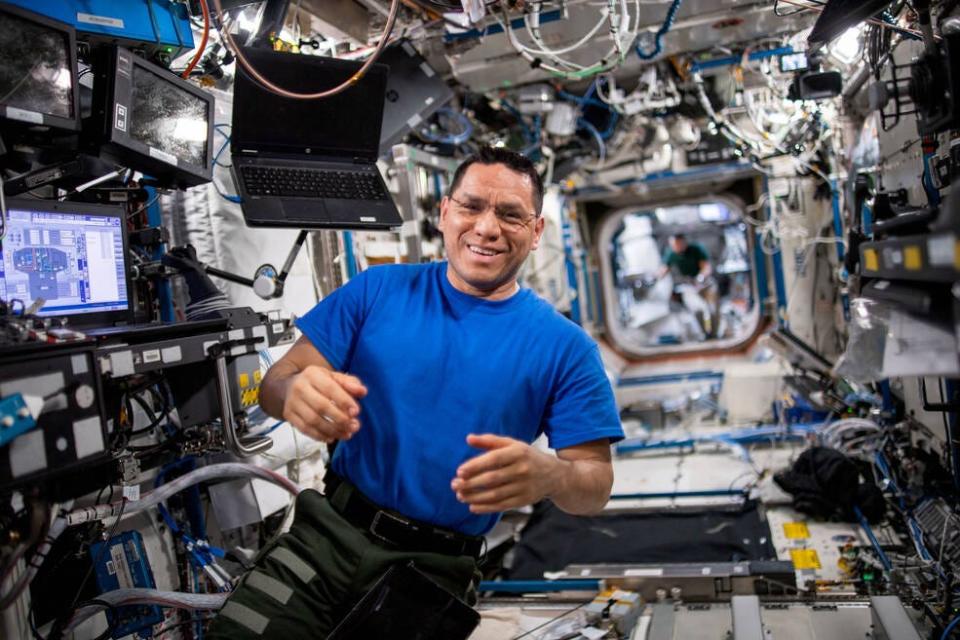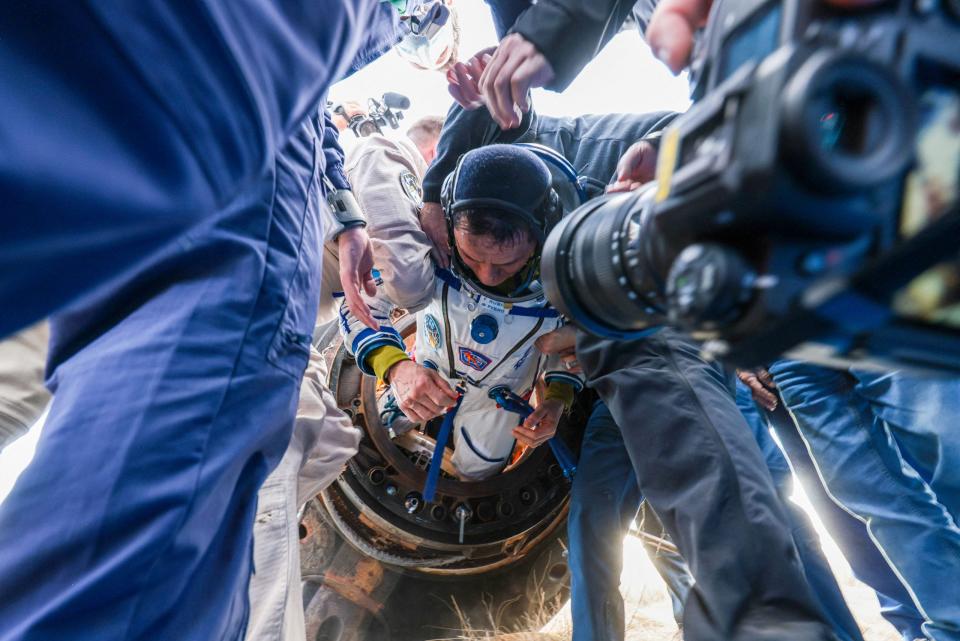Mystery of a tomato missing in space for months has been solved, and a man exonerated

- Oops!Something went wrong.Please try again later.
The mystery of the missing tomato in space has finally been solved.
Perhaps more importantly, an innocent man unjustly accused of eating the fresh produce while aboard the International Space Station has been absolved of blame.
Astronaut Frank Rubio made history in September when his 371 days in orbit made him the American with the record for the longest spaceflight. But before he departed the space station aboard an Earth-bound capsule, Rubio developed a little notoriety among his colleagues – all in good fun, of course.
When Rubio's share of a tomato harvested in March aboard the space station went missing, the 47-year-old astronaut naturally became suspect number one. It took months, but Rubio's name has finally been cleared.

NASA crewmembers aboard the station took part in a livestreamed event Wednesday to celebrate the International Space Station's 25th anniversary, where they had a confession to make. Toward the end of the conversation, astronaut Jasmin Moghbeli came clean about a recent discovery.
"We might have found something that someone had been looking for for quite awhile," Moghbeli said as she and her crewmates shared a laugh.

Ghost galaxy: Ancient 'monster' galaxy shrouded in dust detected by NASA
Red dwarf tomato was part of NASA experiment

The Red Robin dwarf tomato in question was part of a March 29 off-Earth harvest.
As part of the Veg-05 experiment, which Rubio himself had tended as it experienced an unexpected humidity drop, astronauts were asked to eat tomatoes grown under different light treatments and rate them based on factors like flavor, texture and juiciness.
It’s harvest time! 🍅
The Veg-05 study is the next step in addressing the need for a continuous fresh-food production system in space. This crop of dwarf tomatoes is heading back to Earth for scientific analysis! pic.twitter.com/4f0LtFwJAY— ISS Research (@ISS_Research) March 29, 2023
But before the former Army doctor and helicopter pilot could try his share, it floated away in a Ziploc bag somewhere aboard a space station as large as a six-bedroom house, according to Space.com.
"I spent so many hours looking for that thing," Rubio joked during a September livestream conversation with senior NASA management. "I'm sure the desiccated tomato will show up at some point and vindicate me, years in the future."
'We found the tomato'

In what may come as a relief to Rubio, it ended up taking months ‒ not years ‒ to find the wayward tomato.
Rubio, who has long since returned to Earth, didn't have the pleasure of being aboard the space station by the time whatever was left of the produce was discovered.
Rubio, a Salvadorian-American born in Los Angeles, landed Sept. 27 in a remote area of Kazakhstan with the two cosmonauts with whom he embarked more than a year earlier for what they thought would be a six-month mission. However, issues with a Russian Soyuz capsule requiring a replacement more than doubled his stay in space.
Fortunately, his departure didn't mean the hunt for the red tomato came to an end. Moghbeli's admission came Wednesday when NASA's Associate Administrator Bob Cabana cheekily asked whether the astronauts had found anything long ago misplaced.
"Our good friend Frank Rubio who headed home has been blamed for quite awhile for eating the tomato," Moghbeli said. "But we can exonerate him: we found the tomato."
Eric Lagatta covers breaking and trending news for USA TODAY. Reach him at elagatta@gannett.com
This article originally appeared on USA TODAY: Tomato missing in space is found: ISS astronaut 'exonerated'

